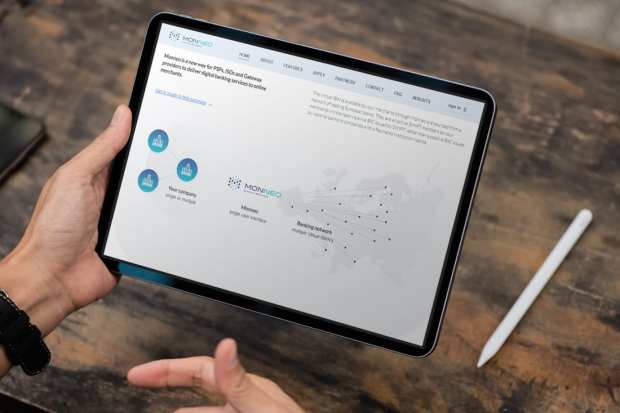Virtual IBANs Speed ‘Consumerization’ Of B2B Payments

Going global isn’t as easy as setting up an eCommerce site and waiting for the orders to come in. It requires compliant and complex banking relationships. As Monneo Managing Director Lilia Metodieva told PYMNTS, virtual IBANs can facilitate the secure global movement of money.
Many merchants have global ambitions, but setting up shop, so to speak, can be an onerous process — particularly where payments are involved and might require multiple bank accounts at multiple banks.
Lilia Metodieva, managing director of Monneo, told PYMNTS that virtual international bank account numbers (virtual IBANS) can help merchants untangle the complexities of global banking relationships and modernize B2B transactions in the process. Virtual IBANs are the reference numbers issued by a bank that allow payments to be routed to a physical/regular bank account.
There’s growing consolidation between payments and banking, she said, and the movement has been toward an interoperable and secure global transactional ecosystem. As Metodieva told PYMNTS, “virtual IBANs have become an inseparable part of the merchant payment ecosystem because whenever there is a movement of money, things must be highly secure and highly regulated.”
Against that backdrop, she said, eCommerce merchants that desire a global presence need the right tools to manage their operations so that they can balance satisfying compliance and regulatory mandates with the challenges of satisfying customers’ payment preferences. At a high level, she said, virtual IBANs can fill in the inefficiencies between traditional banks and online payments “and connects the gaps in the ecosystem.”
No Need To Go Market By Market
Those gaps become glaringly evident when firms — even those not operating within eCommerce — forge presence and partnerships across a variety of different markets. As Metodieva noted, that expansion means striking relationships with parties in the U.K., Europe, Asia and the rest of the world — and grappling with setting up payments functionality in each of those markets.
That means, said Metodieva, working with different banks in each of those markets in a bid to offer a range of different payment options.
For those firms, she maintained, “it’s from an operational perspective that things become difficult because [enterprises] have to manage their accounts through different interfaces, sending different types of transactions through different banks. It becomes really complicated and really problematic.”
Virtual IBANs, she said, allow B2B operations to run, worldwide, without those complications — by setting up several banking relationships through a single interface and point of contact across one platform.
A key advantage that accrues to the firm using virtual IBANs, as noted by Metodieva, is that time — perhaps the most precious of commodities — is saved. Done through traditional means, merchants would have to go bank by bank, country by country, to open up accounts, which costs money and can shift focus away from the day-to-day task of running a business. Human capital can be more effectively deployed — and stay on top of new growth opportunities.
In addition, she said, merchants “can always have a backup solution with the virtual IBAN to have another virtual IBAN with another bank. Among the most important issue we wanted to address actually is risk diversification,” she told PYMNTS.
Even with the advantages in place with virtual IBANS, said Metodieva, “there is still a lot of work to be done in the direction of creating more awareness — what virtual IBAN really is, how it works and how it can help eCommerce.”
There is significant potential for virtual IBANs to help streamline and modernize B2B payments. We’re moving toward what she called the “consumerization of B2B payments.” The flow of transactions between buyers and suppliers can become more intuitive through the use of virtual IBANS and can be a bit more like the transactions on a platform that is person-to-person (P2P) or consumer-to-business (C2B) in nature.
“Everyone is so used to traditional banking because this is what has been out forever, that they haven’t really thought about having something a little bit more convenient and something which would work better for their business,” Metodieva told PYMNTS. “It’s a matter of educating the market.”
